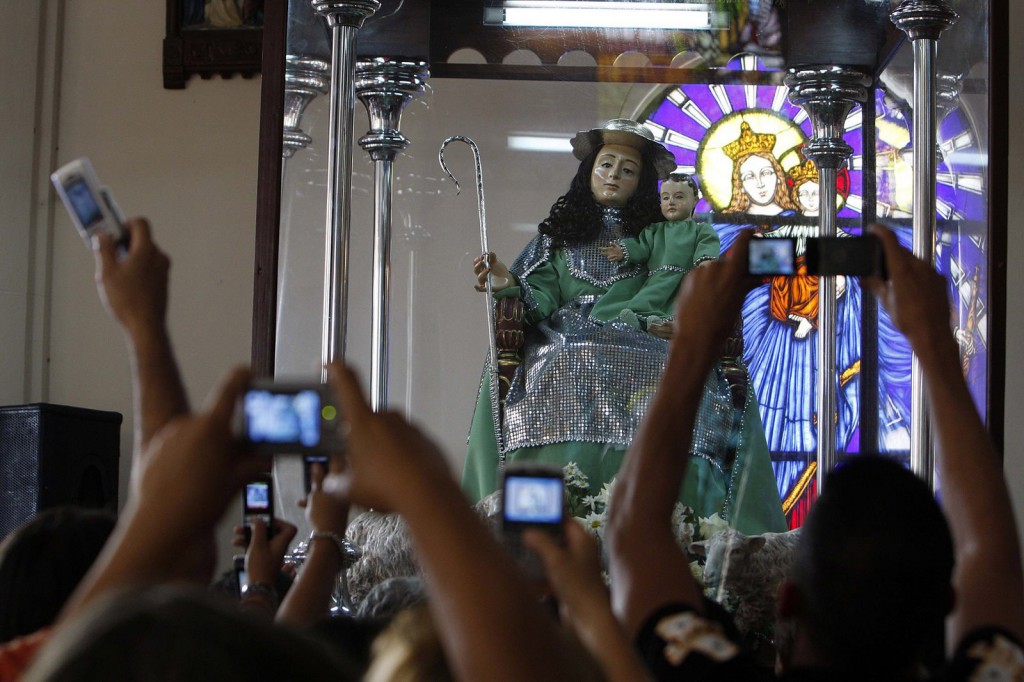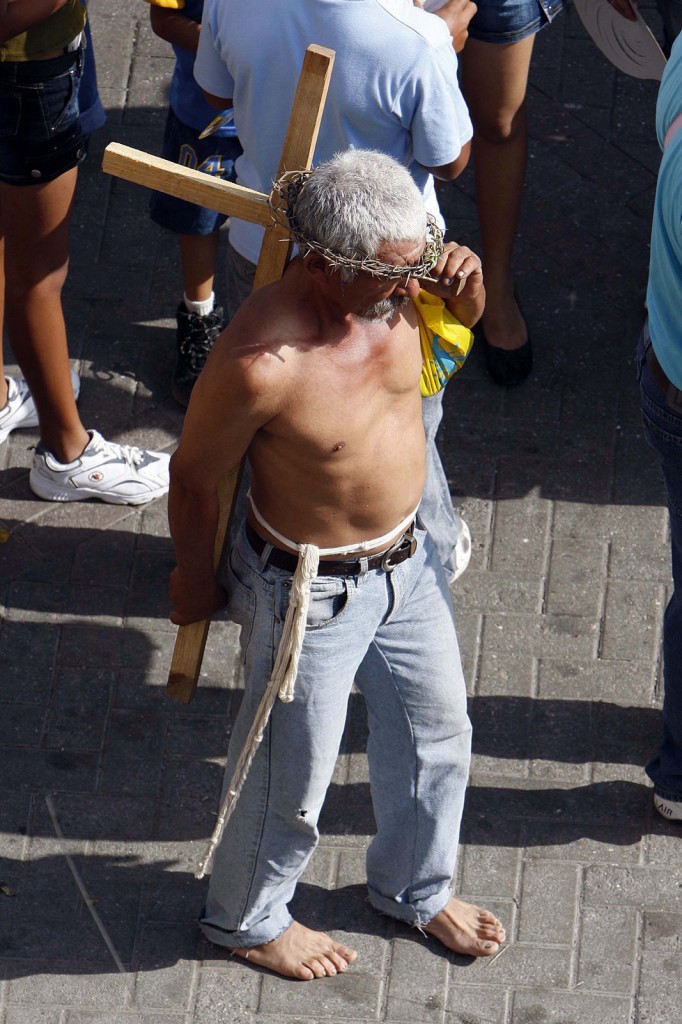Every January 14, the Catholic culture of Spanish origins in Venezuela celebrates the feast of the Divina Pastora (Divine Shepherdess), one of the names by which Mary, the mother of Jesus, is known. This celebration reaches its most important point in the city of Barquisimeto, in the state of Lara, located in the northwest of the country. During these days, many Venezuelan bloggers remembered and shared the origins of the tradition and the stories that turned it into an important cultural celebration. At the same time, social media sites like Twitter and Facebook were filled with pictures and blessings, but the political discussion that is present in the daily life of the country could not be set aside.

Every January 14, 1.5 million believers gather to venerate the Divine Shepherdess in one of the largest processions in Venezuela. Photo by Joaquín Ferrer by Demotix under copyright.
According to Wikipedia [es]:
Los larenses la veneran con especial cariño y devoción, regalándole sombreros y trajes de telas preciosas, algunos de ellos encargados a los modistos más afamados del mundo, motivo por el cual muchas personas comentan que no hay mujer en Venezuela que tenga un vestuario más lujoso que el de la Divina Pastora de Barquisimeto
The blog Simplemente Venezuela [es] (Simply Venezuela) describes the origins of the Venezuelan tradition:
Para 1736, el párroco de Santa Rosa encargó a un famoso escultor que le hiciera una estatua de la Inmaculada Concepción. Sin embargo, por equivocación, en lugar de la Inmaculada, llegó al pueblo la imagen de la Divina Pastora. El párroco quiso devolverla, pero por mucho que lo intentaron, no pudieron levantar el cajón donde habían colocado la imagen. Desde ese momento se considero lo sucedido como una señal de que la Divina Pastora quería quedarse entre ellos.
Profeballa in the blog Venezuela y su historia [es] (Venezuela and its history) tells us how the Lady’s miraculous attributions became stronger in 1856 during a cholera outbreak in the city.
El mismo 14 de enero, al terminar la procesión y entrar la imagen a la Iglesia; el curita Macario exhortó a la multitud que le pidiera a la Divina Pastora que terminara la peste (…)
La imagen recorrió en los días posteriores todos los templos de la ciudad (hoy se hace lo mismo en dos meses), y al finalizar este recorrido el padre Macario Yépez cayó enfermo del cólera, y su muerte marcó el fin de la epidemia.
On the very 14th of January, at the end of the procession, the Lady entered the church, the priest asked the multitude to pray and ask the Divine Shepherdess to end the plague(…)
The statue went on to visit all the other temples in the city (this is now done in 2 months), and at the end of the tour, father Macario Yepez fell sick of cholera, and his death marked the end of the epidemic.
Joaquín, in Venezuela de Antaño [es] (Venezuela of old) tells us a little about the dynamics of the celebration:
A las cuatro de la mañana del día 14 desde el Obelisco sale un grupo de trotadores, para estar presentes a las cinco de la mañana en el inicio de los oficios religiosos con varias misas que culminan a las once, para luego salir en la majestuosa procesión de las mas concurridas del mundo en dirección a la Catedral
Also through Twitter, believers continued participating in the tradition:
@williammorles (William A. Morales):
Hoy pasa la Divina Pastora por mi casa.
@AdrianitaMendez (Adriana Mendez):
Divina Pastora en tus manos lo dejo!
@yancarlopez (Yancar Lopez):
Hoy es el dia mas maravilloso de mi vida,GRACIAS DIVINA PASTORA por el favor concebido… (sic)
@francescaaa1995 (Francesca Ramirez):
buenos dias! :D estoy feliz feliz feliz!!! divina pastora gracias por escucharme!
The political debate also had its place with the visit of some public figures from the opposition to the government, which was announced by the TV station Globovisión [es]; some peopled followed it, but others disapproved of it:
@laurelisaferrer (Laurelisa Ferrer):
Q buenas las entrev a los politicos de oposicion q visitaron a la divinapastora, q diferente el discurso, se percibe tanta paz! @carlaangola
@dalpac (Daniel Pabón):
+1 RT @silmaririvas: Da náuseas el empeño de politizar la procesión de la Divina Pastora por parte de @buenasnoches
@WilfreddyBarco (Wilfreddy Barco):
@carlaangola La procesión de la DivinaPastora no es algo político, muy bien que asistan pero para la proxima ponganse limites.
A good portion of the celebration was carried out on the Internet with pictures and videos that have captured it in the last few years. With this, a celebration that has brought believers for around a century continues to grow beyond a movement that combines faith and technology, and that also attempts to expose beliefs and practices that characterize the country's plurality of cultures.







